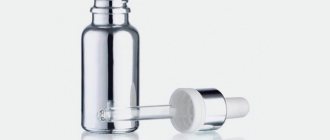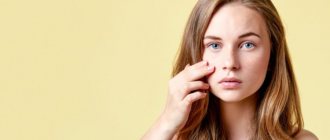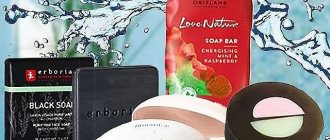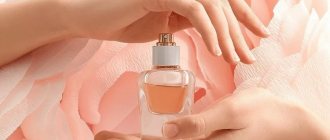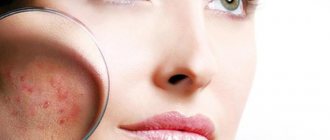Dermatovenereologist (cosmetologist)
Baichorova
Marua Azretovna
21 years of experience
Dermatologist (cosmetologist)
Make an appointment
The constant process of skin renewal can cause blockage of the sebaceous glands and follicles. Getting into microscopic holes, excess sebum and dead cells of the exfoliated epidermis lead to the appearance of blackheads or pimples. Experts have united them under the name “comedones”. The situation is aggravated by the lack of proper skin care, exposure to unfavorable sanitary conditions, as well as the intense production of sebum, the excess of which clogs the ducts and hair follicles.
The vast majority of cases of comedones are observed on oily facial skin: on the nose, forehead and cheeks. According to most medical specialists, such a pathology is true evidence of hormonal imbalances, hidden dermatological problems and malfunctions of the liver and gastrointestinal tract. Therefore, patients who experience discomfort from their appearance are advised not to focus on the cosmetic problem, but to undergo a comprehensive examination to identify possible diseases of the internal organs.
Etiology of the disease
The opinion that comedones appear only in adolescents and young adults is not entirely true. They occur in up to 85% of patients under 25 years of age, after which sebum production decreases and the conditions for blockage of the glands disappear on their own. Also, women often suffer from the disease during pregnancy and at the onset of menopause, when the body experiences a significant hormonal load. The intensive development of the disease can be caused by unsanitary working or living conditions, lack of proper skin care, neglect of hygiene rules and other reasons due to which the adverse effects on the skin of the face acquire such unpleasant consequences. Refusal to treat comedones can cause the formation of scars and age spots at the site of the rash, which can only be eliminated using plastic surgery methods.
How to get rid of comedones: cosmetological methods
The main treatment for acne should be medication, but cosmetic methods can be used as an auxiliary therapy. They can also be used when the disease is in remission, to reduce the risk of relapse, eliminate signs of post-acne and care for problem skin.
The following methods are used in cosmetology to treat acne:
- ultrasound;
- phototherapy;
- mesotherapy;
- plasma therapy;
- chemical peeling;
- cryotherapy, etc.
A set of methods allows for targeted local effects on hair follicles and sebaceous glands. The purpose of cosmetic procedures is:
- skin sanitation;
- strengthening its barrier function;
- restoration of protection against bacteria;
- exfoliation of cells of the stratum corneum;
- sebum evacuation;
- normalization of keratinization processes.
Cosmetic procedures help reduce the likelihood of scars and age spots appearing during the healing period of acne. The result of their implementation is also a decrease in the colonization of pathogenic bacteria.
Although scars do not remain after comedones, they may appear due to squeezing out the rash, in which case laser resurfacing, diamond dermabrasion, and injection procedures may be recommended.
Reasons for the formation of comedones
A black dot or raised white spot on the surface of the skin is excess sebum that is stuck in the sebaceous duct or inside the follicle. The resulting plug disrupts the functioning of the glands and forms a closed environment, ideal for the proliferation of pathogenic microorganisms. Their vital activity “enriches” the plug with toxins, which causes a local inflammatory process and its subsequent spread to healthy areas of the skin.
Among the reasons causing the appearance of multiple comedones on the face, ears or back, experts call:
- hyperactivity of the sebaceous glands;
- use of low-grade cosmetics;
- lack of proper facial care, as a result of which excess sebum and epidermal cells remain on the skin;
- refusal to remove traces of cosmetics before bedtime;
- smoking;
- living or working in an environment characterized by the presence of dust and small particles of dirt in the air;
- unbalanced diet, dominated by fatty, smoked and spicy foods, sweets and flour products;
- deficiency of microelements and vitamins.
A comprehensive examination of the body of a patient complaining of open and closed comedones often reveals hidden pathologies of the following nature:
- liver and gastrointestinal diseases;
- hypothyroidism, gonadal dysfunction, other hormonal disorders;
- genetic predisposition of the skin to inflammation;
- intensity of production of certain hormones, their imbalance in the body;
- uncontrolled use of hormonal drugs;
- frequent stress, sleep disturbances, insomnia.
Complete removal of an external skin defect is only possible if the internal causes listed above are eliminated.
Closed comedones: treatment
Treatment of comedones on the face requires special care and caution. There are several methods for removing comedones:
- Mechanical facial cleansing
from a professional cosmetologist. This cosmetic procedure involves sterile squeezing out pimples after first steaming the face and treating damaged areas of the skin with an antiseptic solution. This is an effective method for removing comedones, but requires periodic repetition.
- Atraumatic facial cleansing
. This is the most gentle method of getting rid of blackheads. Skin cleansing occurs by applying masks with fruit acid of varying concentrations to the skin, which first open the pores, then heat and dissolve sebaceous plugs and, finally, close the pores. The entire procedure takes about 40 minutes and is very effective in combating comedones.
- Use of special peelings
against blackheads. The peeling agent may contain anti-inflammatory, keratolytic, and antiseborrheic components. The procedure allows you to cleanse the skin of superficial comedones and lift deep ones in order to subsequently perform mechanical cleansing of the face.
- Ultrasonic facial cleansing is a modern and very effective method of getting rid of comedones. Cleansing the face of blackheads occurs thanks to ultrasonic waves, which cause skin cells to vibrate and push out unnecessary things, that is, sebaceous plugs, after which the pores narrow, which allows you to forget about comedones for a long time. Ultrasonic cleaning does not have a recovery period, unlike mechanical cleaning; after the procedure, you can immediately return to your usual social life.
Varieties and features
The skin is sensitive to lack of care and disruptions in the body. Among the symptoms that precede the appearance of subcutaneous comedones, most patients note:
- a sharp increase in skin oiliness;
- density and roughness of the skin;
- change in natural skin color to an unattractive pale gray-green shade;
- dense nodules, indicating blockage of the sebaceous glands and hair follicles.
There are open and closed comedones, which differ in appearance. Black spots on the surface of the cheeks, nose and chin, the so-called T-zone, are an open form of the disease. Noticeable white sebaceous plugs under the skin are a closed type of pathology. They often develop against the background of hidden inflammatory processes due to skin damage by a fungal infection, staphylococcus or pathogenic bacteria. Lack of proper treatment causes plugs of purulent acne to appear at the site, which leave behind scars and scars.
The localization area for closed white comedones on the face is the forehead, nose and chin, as well as the décolleté and upper back. The appearance of formations on the body is often associated with wearing synthetic underwear and clothing, which does not allow air to pass through and causes the skin to secrete sweat. Trying to fight comedones by squeezing in unsanitary conditions only aggravates the problem. The pustular infection spreads to nearby healthy areas of the skin, and the disease progresses rapidly. And in place of the squeezed out formations there remains a serous crust and an inconspicuous scar, indicating damage to the skin.
Open comedones, or blackheads, acquire an unpleasant appearance due to contamination of the sebaceous plug with dust or residues of cosmetics. When exposed to air, the contents of the sebaceous duct oxidize and darken, making it visible on the surface of the skin. Removing such comedones does not bring the expected effect. The empty gland duct soon becomes clogged with fat, and the disease again makes itself felt with an unpleasant cosmetic effect.
Blackheads: how to get rid of them
November 15, 2022
Anna Aleksandrovna Novikova, dermatovenerologist, cosmetologist at the TORI aesthetic medicine clinic, talks about one of the most common problems and ways to combat it:
Where do blackheads on the face come from?
The mechanism for the appearance of blackheads (comedones) occurs as follows: our sebaceous glands produce a secretion that comes out through the pores. Everything would be fine, but there are bacteria on the surface of the skin. So, when released, the secretion “meets” these same bacteria. A chemical oxidation process occurs, as a result of which the secretion darkens, turning into black dots that get stuck in the pores. When there are many such points, the face as a whole looks unkempt. Therefore, for aesthetic purposes, cosmetologists recommend removing comedones. Although they are not dangerous in themselves. And if you decide to simply not pay attention to them, not touch them, that’s entirely your business. But most women still prefer to remove them. The whole question is how to do it.
What do you recommend to do?
Before making recommendations, I want to note that it is impossible to get rid of blackheads once and for all! Because this is a normal and natural process of sebum formation in the body and its release to the surface. People with normal, dry skin are luckier: they have a controlled process, and the secretion is released in moderate doses. But those with oily, problem skin, as a rule, suffer from excess secretions. Nevertheless, I recommend that all women, without exception, pay special attention to cleansing their face. This primarily concerns the T-zone. Cleanse your skin daily (morning and evening) with special products, preferably washing your face. Use scrubs according to your skin type, lotions with fruit acids. Clay masks help fight comedones at home. For people with dry skin, they can be done once a week. For people with normal, combination and oily skin – twice a week. Newfangled nasal and T-zone cleansing strips also help clear out clogged pores.
Is it safe to squeeze out comedones at home?
The question of self-squeezing out blackheads from cosmetologists always causes rejection. In principle, you can try to remove them yourself, but it’s better not to! There is a high risk of injuring the skin and not “squeezing” the comedones to the end. Staphylococcus and streptococcus bacteria can get into the wound (there are a huge number of them in the air!), the process of inflammation will begin, an abscess will appear, and then drug treatment will be required. There is no need to aggravate the problem; the best way out is to visit a cosmetologist.
What professional procedures are there for this?
A cosmetologist has many procedures in his arsenal to solve the problem of comedones. Some patients ask for mechanical facial cleansing. There are nuances here: when there is no inflammation (acne) on the surface of the skin, then there is no need for mechanical cleansing. It is better to carry out hardware facial cleansing Hydra facial: on the one hand, the vacuum nozzle will first pull out all impurities from the pores, and with the help of the other nozzle the doctor will introduce nourishing and moisturizing serums under the skin. You can also make peelings, for example, based on fruit acids or salicylic acid. There are quite a few of them, the doctor selects them for each patient. You can also carry out ultrasonic facial cleansing, which, like vacuum, does not injure the skin. A special nozzle in the form of a spatula ideally cleanses impurities from the pores and from the surface of the skin. For patients with problem skin, we often recommend a photorejuvenation procedure, which involves treating enlarged pores, comedones, and helps reduce sebum production. If there are foci of inflammation on the skin, then appropriate treatment with special cosmetic preparations is prescribed.
Does the appearance of comedones depend on our diet?
There is certainly a connection. In order to prevent excessive work of the sebaceous glands, I would recommend not to “clog” your intestines with fast food and carbonated drinks (young people love them very much; by the way, it is people under 20-25 years old who suffer the most from comedones). Excess sebum is our body's opportunity to get rid of toxins. Plus, you should definitely check the condition of your gallbladder and urinary tract with a gastroenterologist. Curves in the neck of the gallbladder can lead to stagnation or secretion of more sebum. Comedones can appear after 35 years, when a woman’s hormonal levels change. In this case, in addition to consulting the above-listed specialists, you need to visit a gynecologist-endocrinologist. If the problem of the appearance of blackheads is related to physiology, medication is prescribed.
When to see a doctor
Experts recommend not delaying a visit to the doctor if symptoms of inflammation and blockage of the sebaceous glands appear. You should not put up with an unpleasant cosmetic effect or try to cope with it using home methods, at the risk of intensifying the pathological process. Moreover, modern medicine has at its disposal many effective methods of combating the disease, depending on the type and general condition of the skin.
Are you experiencing symptoms of comedones?
Only a doctor can accurately diagnose the disease. Don't delay your consultation - call
Diagnostics
For an experienced dermatologist, an external examination of the patient’s skin is enough to immediately make the correct diagnosis. Specialized laboratory research methods allow us to clarify the mechanism of development of the disease and the presence of pathologies of internal organs: blood tests for hormonal balance and internal infections, tomography of the gastrointestinal tract and liver. It is possible to prescribe additional measures as part of a standard examination if the patient has a history of serious diseases of the internal organs.
Treatment
You can cope with the appearance of a limited number of pimples and comedones of any type with the help of careful skin care. In case of intense shedding, consultation with a dermatologist is required. He will select a remedy for comedones and a suitable list of procedures to free the ducts (so-called extraction) and reduce the volume of sebum production.
In most cases, the following treatment methods are used:
- mechanical cleansing of the face - carried out after thorough cleaning and warming of the skin using the fingers, a Uno spoon or a Vidal needle. After cleaning, the skin is treated with alcohol. Provided the contents of the duct are completely removed, the risk of infection is reduced to zero, and there are no signs of hyperemia or inflammation on the face. During the day, it is strictly forbidden to use cosmetics so that its particles do not clog the open duct;
- enzymatic peeling using exotic fruit extracts. Loosening the stratum corneum of the skin allows comedones to come out naturally or through brosage - a cleaning procedure with soft brushes. Peeling is contraindicated in the presence of ulcers, exposure to which can cause skin infection;
- disincrustation is a hardware technique for removing comedones under the influence of a weak electric current. This method is used relatively rarely due to multiple contraindications;
- peelings - chemical, acidic, film or sheet, the effect of which softens the skin and frees the ducts from impurities. At the same time, the substances contained in the peeling preparation relieve the inflammatory process and soothe the skin;
- ultrasonic facial cleansing – treatment using ultrasonic waves, the “impact” of which gently “knocks out” plugs. At the same time, the procedure has a pronounced cosmetic effect - it removes wrinkles, refreshes the complexion, tightens the skin;
- Vacuum skin cleansing – gentle removal of plugs from the ducts, leaving no noticeable marks. The procedure is contraindicated for patients with rosacea, because there is a risk of injury to small vessels.
Please note: squeezing comedones and using dubious home remedies can worsen your skin condition. It is also not recommended to select medications at the pharmacy on your own, relying on commercials and advice from friends. Treatment should be prescribed only by an experienced specialist who has studied the results of diagnostic studies.
The best remedies for blackheads on the nose and face
Properly selected comprehensive basic care will prevent the occurrence of blackheads. Let's look at which cosmetic care products are most effective in the fight against acne.
Gels and foams for washing against blackheads
Regular cleansing in the morning and evening is a key step in the beauty routine for oily and problematic skin. Cleansing should be aimed at removing excess sebum from the face. The formulas of the cleansers also contain sebum-regulating and mattifying components that reduce its production by the sebaceous ducts.
- Effaclar Ultra range micellar water
will help remove excess sebum, sweat and cosmetics without water: a special combination of micelles, thermal water, glycerin and zinc, which has antibacterial properties, provides oily skin with delicate cleansing and the necessary care.
Choose lightweight, non-comedogenic, alkaline-free gels and foams with a normal or acidic pH. Aggressive cleansing with alcohol-containing solutions or alkaline soap violates the skin's natural protective barrier - the hydrolipid film. As a result of this excessive degreasing, dehydrated skin reacts by increasing the synthesis of sebum in order to moisturize naturally.
- Provide the dermis with gentle cleansing, use gels or foams for washing that do not contain alcohol or aggressive acids. foaming gel for oily, acne-prone skin
will gently remove excess sebum and deeply cleanse pores . The gel does not dry out sensitive skin and gives it a feeling of cleanliness and freshness for a long time.
Clay masks for blackheads
The formulas of mineral masks based on clay and its derivatives have a pronounced absorbent effect, literally pull out the remaining sebum from the pores, normalize its synthesis, and mattify the skin well. Use these masks 1-2 times a week to deeply cleanse your face.
Effaclar Purifying Mattifying Mask
removes even invisible impurities thanks to two types of cleansing clay and thermal water with the antioxidant selenium, tightens pores, and moisturizes the skin.
Exfoliants
Dead skin particles are part of the sebaceous plug, which is why it is so important to exfoliate the skin in a timely manner. Exfoliants (soft scrubs, peelings, gommages) remove the stratum corneum of cells, preventing clogging of pores. Formulas based on acids and enzymes are also suitable for exfoliating problem skin.
Effaclar Micro-Exfoliating Cleansing Gel
with acids (salicylic and lipohydroxy acid) removes the keratinized layer of cells without scrubbing particles, eliminates impurities, and prevents clogging of pores.
Lotions for blackheads
Another effective remedy for acne are lotions with a sebum-regulating effect, dissolving blackheads and narrowing pores. The lotion is applied to previously cleansed skin and prepares it for basic care, improving the absorption of its beneficial components by cells.
Effaclar pore tightening lotion will help remove residual cleanser and impurities, as well as reduce pore size.
. The ultra-soft formula of the product gently cares for the skin, smoothing and mattifying its surface. The lotion also prepares the epidermis for the application of the cream.
Stripes against blackheads
Strips that pull out sebaceous plugs from pores are a working way to quickly cleanse pores of impurities. Apply a special adhesive strip mask to cleansed skin, leave it for 15-20 minutes and carefully remove it like a band-aid. Then apply a clay mask or wipe the area with lotion for best results and tighten pores.
Creams against acne and blackheads
Corrective care (creams, serums) will help prevent not only the formation of blackheads, but also their transformation into pimples. The sebaceous plug creates a favorable airless environment for the proliferation of acne bacteria (Propionibacterium acnes or Malassezia), which contribute to the development of inflammatory elements. A cream for blackheads, in addition to matting and antimicrobial, should have moisturizing properties that prevent tissue dehydration. Let's take a closer look at effective remedies against blackheads.
How to make an appointment with a dermatologist at JSC “Medicine” (clinic of academician Roitberg) in Moscow
You can make an appointment with the specialists of JSC "Medicine" (clinic of Academician Roitberg) on the website - the interactive form allows you to select a doctor by specialization or search for an employee of any department by name and surname. Each doctor’s schedule contains information about visiting days and hours available for patient visits.
Clinic administrators are ready to accept requests for an appointment or call a doctor at home by calling +7 (495) 775-73-60.
Convenient location on the territory of the central administrative district of Moscow (CAO) - 2nd Tverskoy-Yamskaya lane, building 10 - allows you to quickly reach the clinic from the Mayakovskaya, Novoslobodskaya, Tverskaya, Chekhovskaya and Belorusskaya metro stations .
